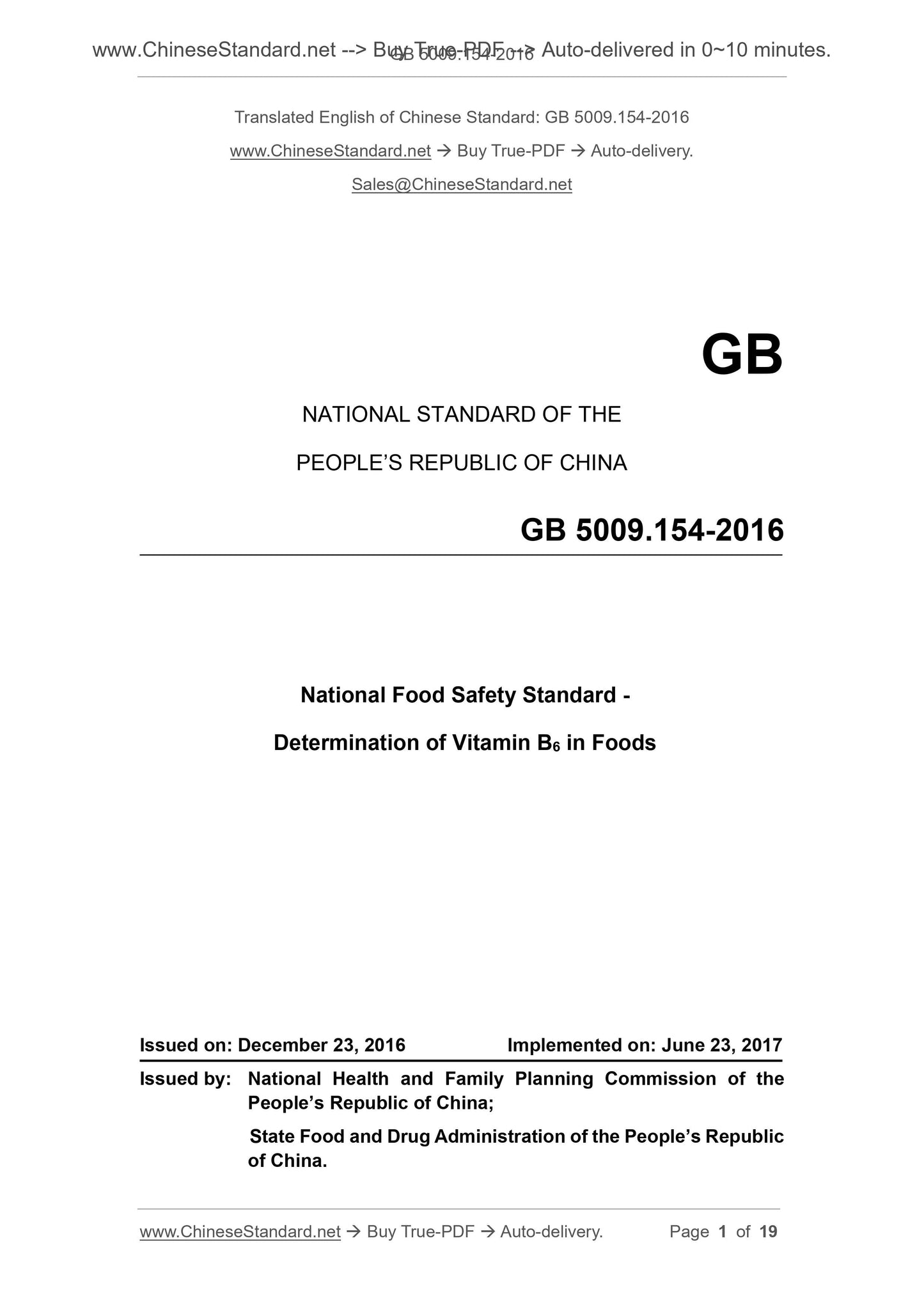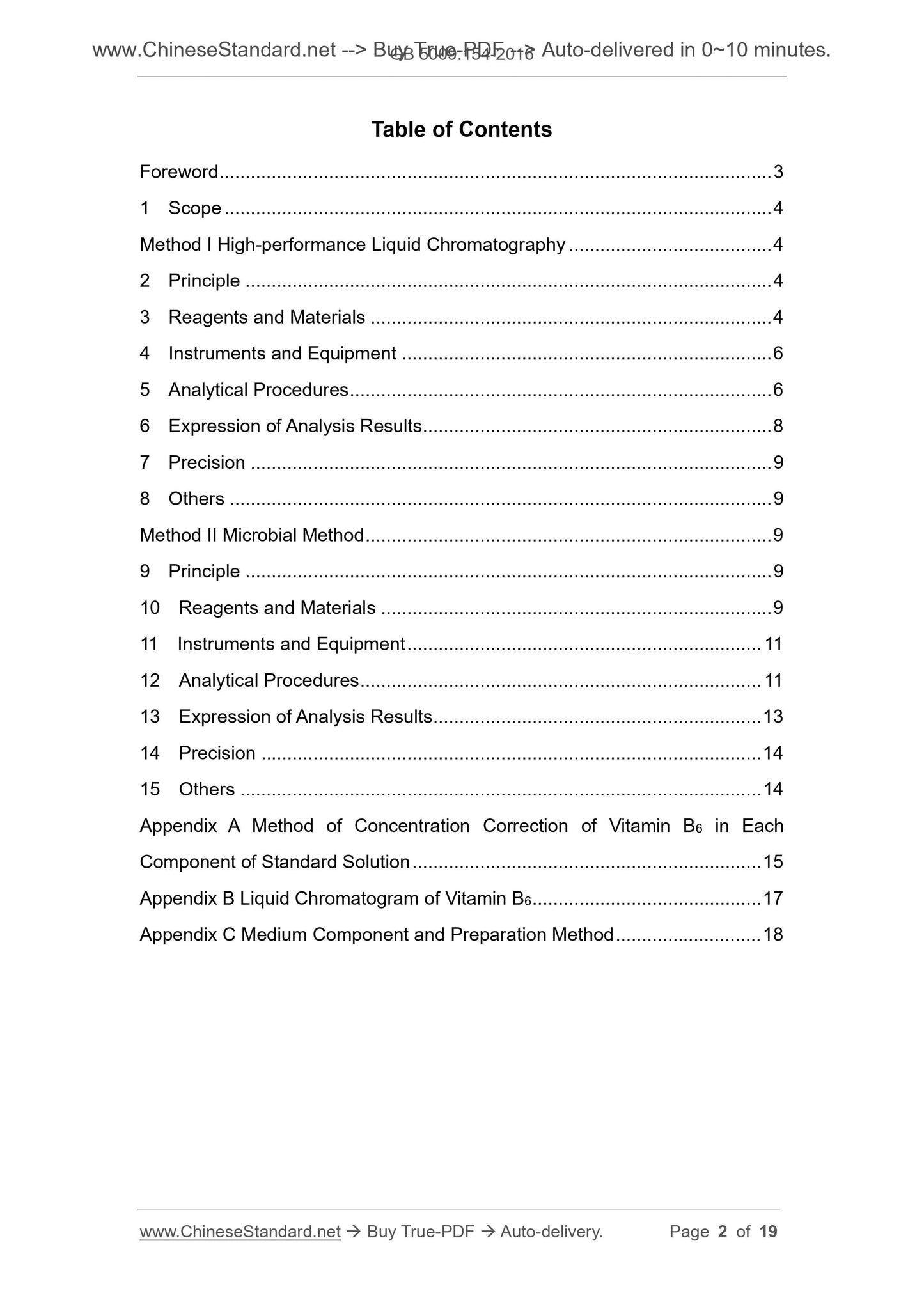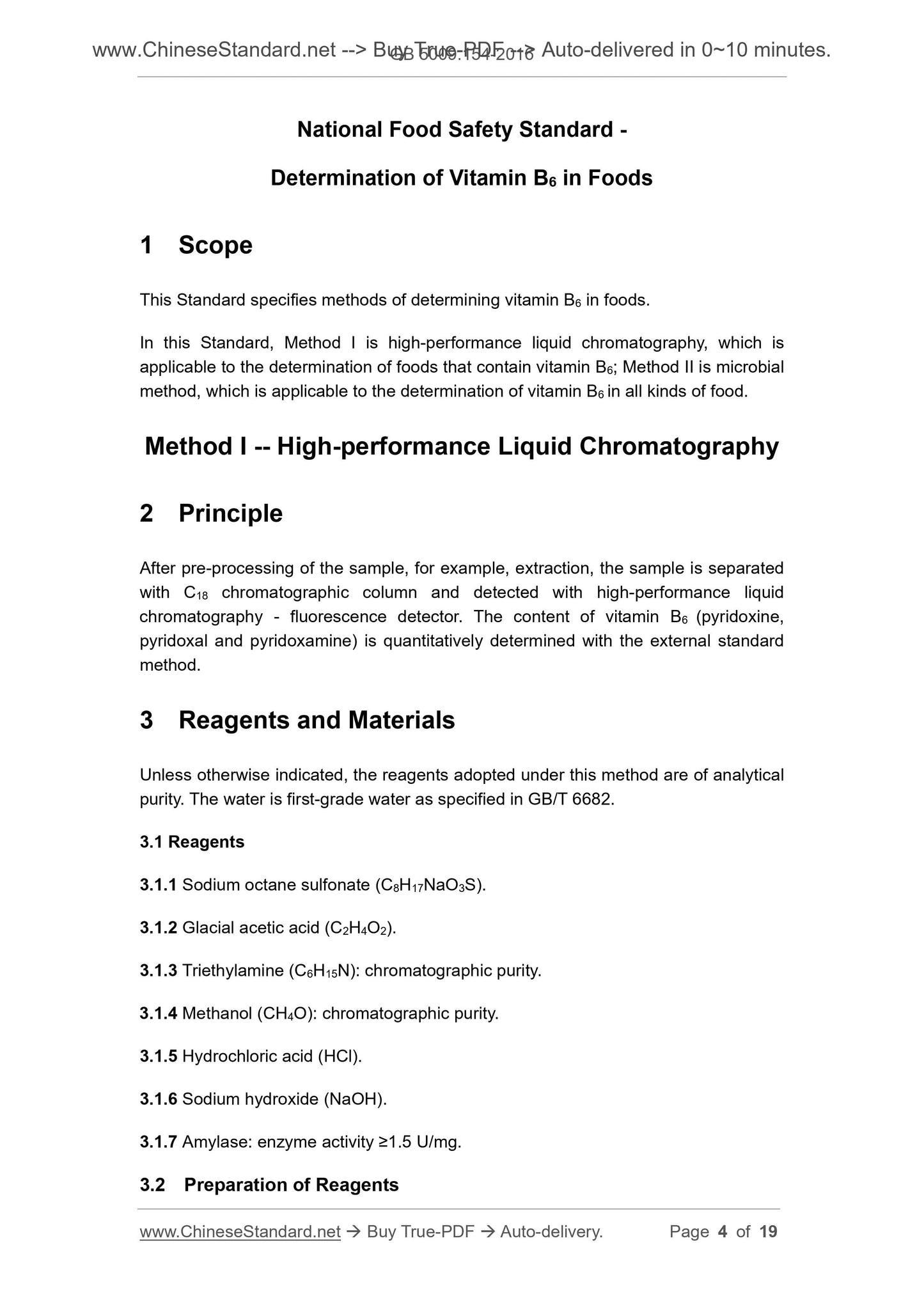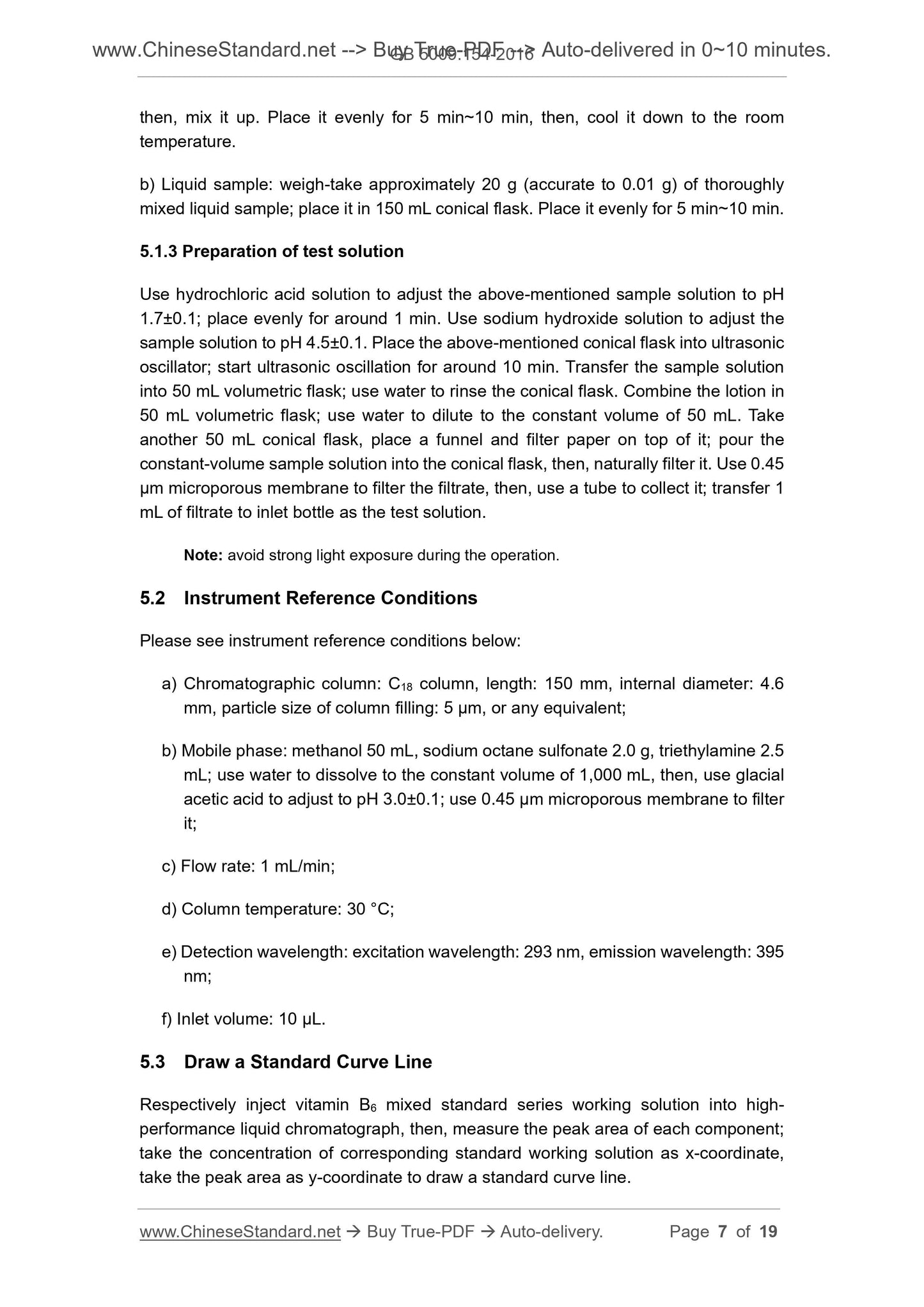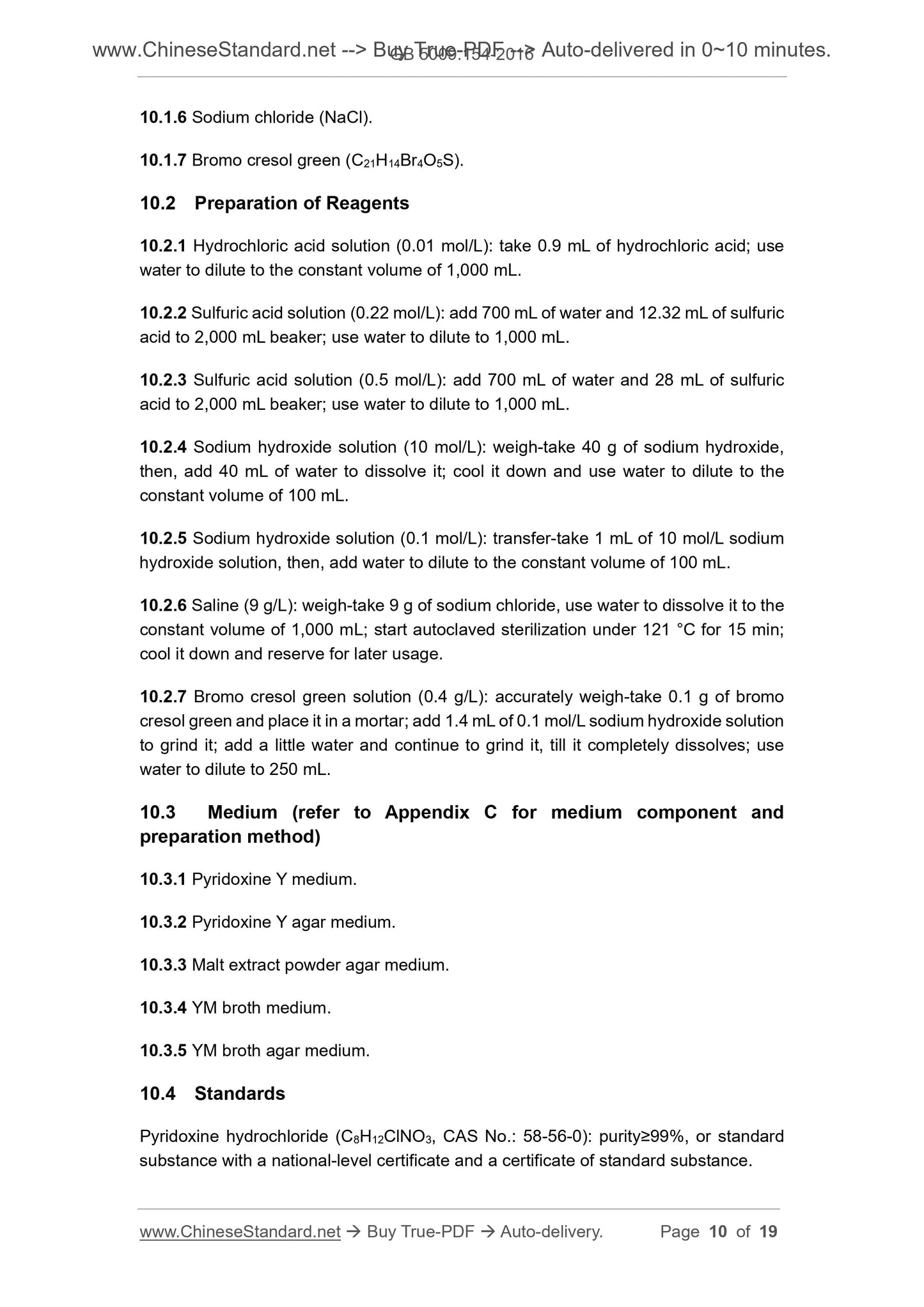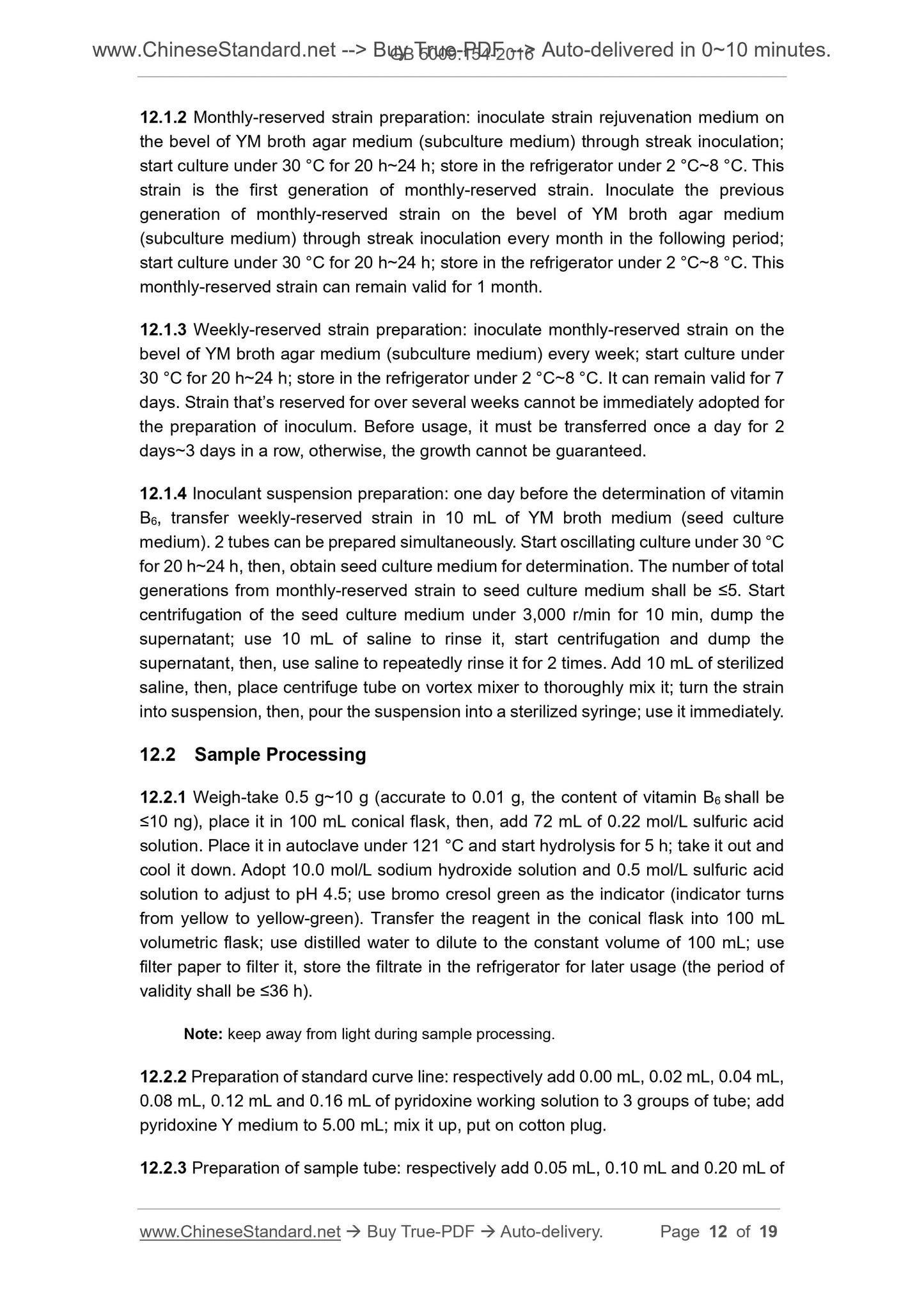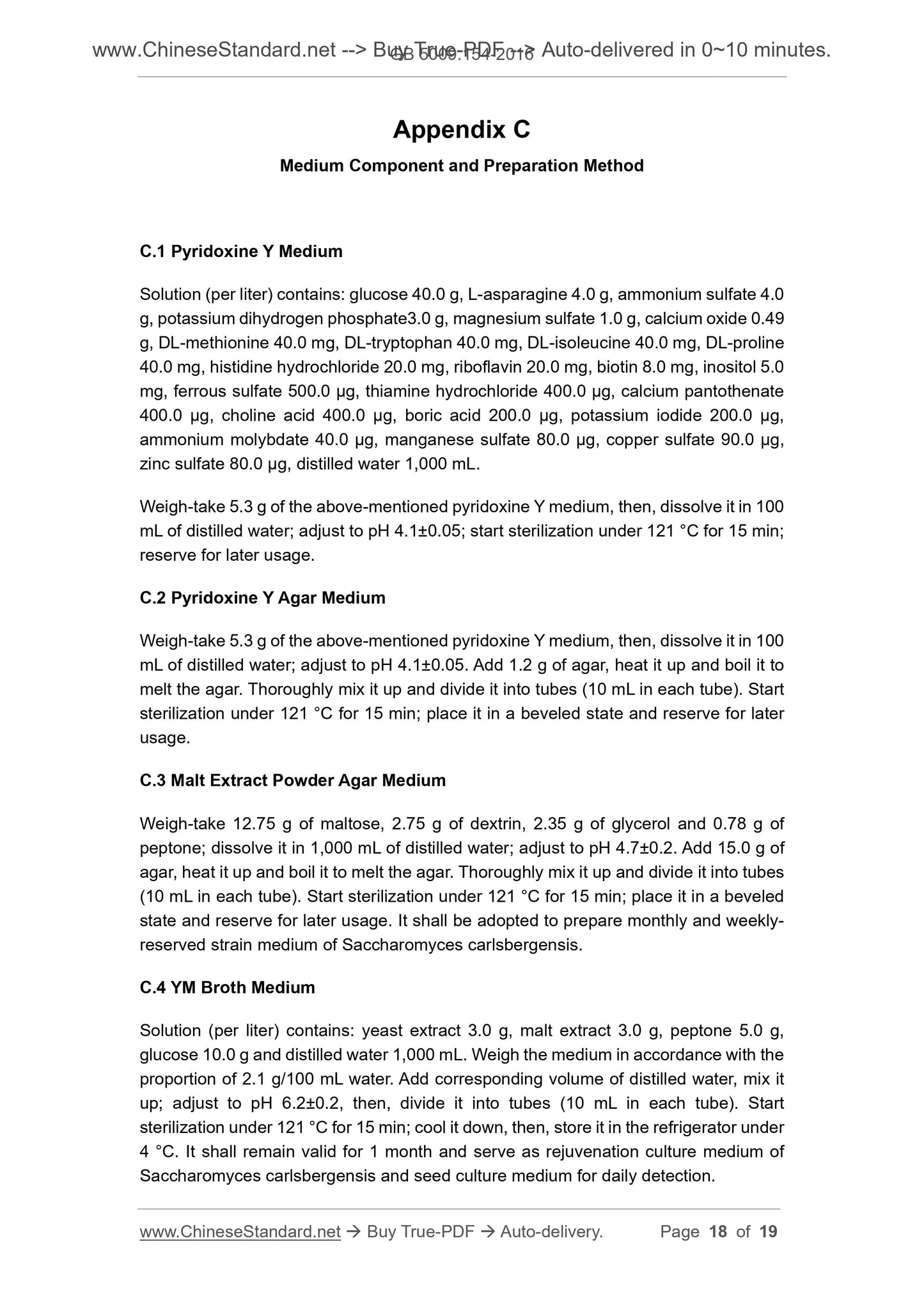1
/
of
7
PayPal, credit cards. Download editable-PDF & invoice in 1 second!
GB 5009.154-2016 English PDF
GB 5009.154-2016 English PDF
Regular price
$115.00
Regular price
Sale price
$115.00
Unit price
/
per
Shipping calculated at checkout.
Couldn't load pickup availability
GB 5009.154-2016: National food safety standard -- Determination of vitamin B6 in foods
Delivery: 9 seconds. Download (and Email) true-PDF + Invoice.Get Quotation: Click GB 5009.154-2016 (Self-service in 1-minute)
Newer / historical versions: GB 5009.154-2016
Preview True-PDF
Scope
This Standard specifies methods of determining vitamin B6 in foods.In this Standard, Method I is high-performance liquid chromatography, which is
applicable to the determination of foods that contain vitamin B6; Method II is microbial
method, which is applicable to the determination of vitamin B6 in all kinds of food.
Method I -- High-performance Liquid Chromatography
Basic Data
| Standard ID | GB 5009.154-2016 (GB5009.154-2016) |
| Description (Translated English) | National food safety standard -- Determination of vitamin B6 in foods |
| Sector / Industry | National Standard |
| Classification of Chinese Standard | C53 |
| Word Count Estimation | 12,141 |
| Date of Issue | 2016-12-23 |
| Date of Implementation | 2017-06-23 |
| Older Standard (superseded by this standard) | GB 5413.13-2010; GB/T 5009.154-2003 |
| Regulation (derived from) | National Health and Family Planning Commission Notice No.17 of 2016 |
| Issuing agency(ies) | National Health and Family Planning Commission of the People's Republic of China, State Food and Drug Administration |
Share
